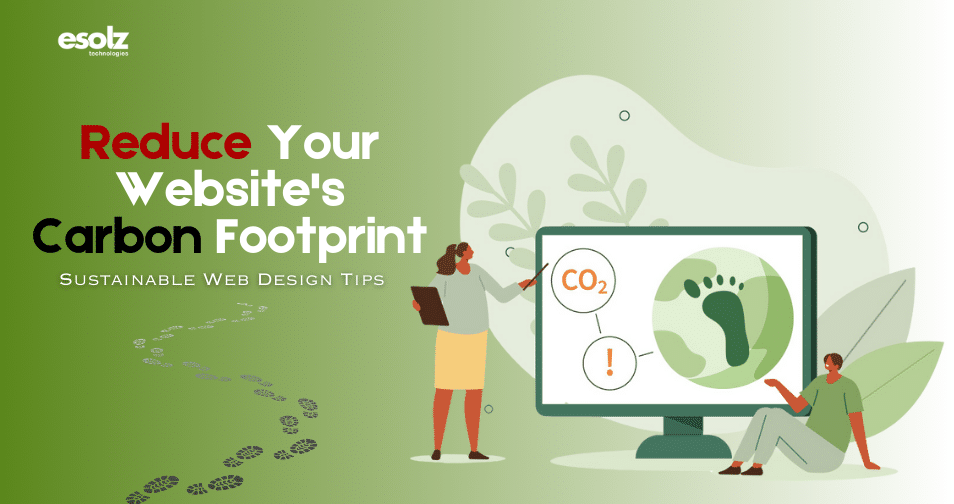🌿 Introduction: The Hidden Environmental Cost of the Internet
In today’s digital age, the internet is an integral part of our daily lives. However, many are unaware of its environmental impact. The internet accounts for approximately 2% of global carbon emissions, a figure comparable to the aviation industry . Each website visit, video stream, and online interaction contributes to this footprint.

As web designers, developers, and business owners, we have a responsibility to mitigate this impact. Sustainable web design focuses on creating websites that are both user-friendly and environmentally conscious.
🛠️ Step-by-Step Guide to Sustainable Web Design
1. Optimize Website Performance
-
Reduce Page Load Time: A faster website consumes less energy. Compress images, leverage browser caching, and minimize the use of heavy scripts.
-
Efficient Coding Practices: Write clean, concise code. Avoid redundant code and unnecessary plugins that can slow down your site.
-
Lazy Loading: Implement lazy loading for images and videos, ensuring that media is only loaded when it’s about to be viewed.
2. Choose Green Hosting Providers
-
Renewable Energy-Powered Servers: Opt for hosting services that use renewable energy sources, such as wind or solar power, to run their data centers.
-
Energy-Efficient Data Centers: Select providers that prioritize energy efficiency in their operations.
-
Carbon Offset Programs: Some hosting companies invest in carbon offset programs to neutralize their environmental impact.
3. Design for Minimalism
-
Simplify Design Elements: Use a minimalist approach in design. Avoid unnecessary animations, auto-play videos, and excessive graphics that can increase data usage.
-
Optimize Media Files: Compress images and videos without compromising quality. Tools like TinyPNG and ShortPixel can assist in reducing file sizes.
-
Use System Fonts: Instead of custom fonts, use system fonts that don’t require additional HTTP requests, reducing data transfer.
4. Implement Efficient Content Delivery
-
Content Delivery Networks (CDNs): Utilize CDNs to distribute content closer to users, reducing latency and energy consumption.
-
Geographically Distributed Servers: Ensure that your hosting provider has servers in multiple locations to serve content more efficiently.
5. Regularly Monitor and Audit
-
Carbon Footprint Calculators: Use tools like Website Carbon Calculator to assess your site’s carbon emissions and identify areas for improvement.
-
Performance Audits: Regularly audit your website’s performance using tools like Google Lighthouse to ensure optimal efficiency.
❓ Frequently Asked Questions
Q1: How can I measure my website’s carbon footprint?

A1: Tools like Website Carbon Calculator provide insights into your site’s carbon emissions per page view. These tools analyze factors like page size, hosting provider, and user device energy consumption.
Q2: Will sustainable web design affect user experience?
A2: Not at all. In fact, optimizing your website for sustainability often leads to improved performance, faster load times, and a better user experience.
Q3: Are there any legal requirements for sustainable web design?
A3: While specific regulations vary by region, there is a growing trend towards environmental accountability in digital practices. For instance, the EU’s General Data Protection Regulation (GDPR) encourages data minimization, which aligns with sustainable practices.
Q4: Can sustainable web design improve SEO rankings?
A4: Yes. Search engines like Google prioritize fast-loading, user-friendly websites. By implementing sustainable design practices, you can enhance your site’s SEO performance.
Q5: Is it expensive to implement sustainable web design?
A5: Many sustainable practices, such as optimizing images and choosing efficient hosting providers, are cost-effective and can even lead to savings in the long run due to reduced energy consumption.
🌍 Conclusion: The Future of Sustainable Web Design
As the digital landscape continues to evolve, the importance of sustainable web design becomes increasingly evident. By adopting eco-friendly practices, we not only reduce our environmental impact but also contribute to a more sustainable future.
Remember, every small change counts. Whether it’s optimizing images, choosing green hosting, or simplifying design elements, each step brings us closer to a more sustainable digital world.





